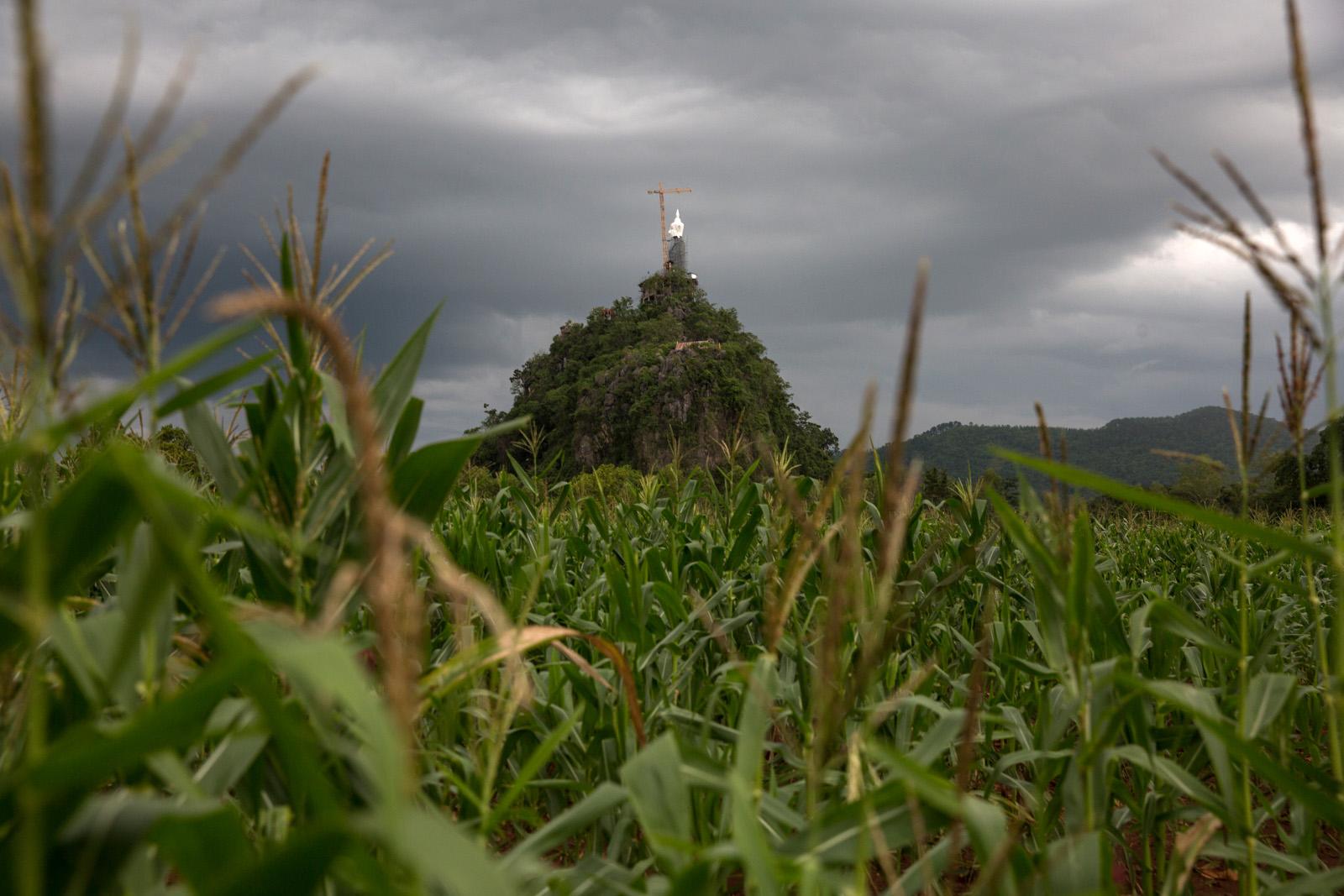
A huge Buddha statue being erected on the peak of a limestone outcrop at Wat...
READ ON
A huge Buddha statue being erected on the peak of a limestone outcrop at Wat Pa Tham Khong in Dong Mafai District of Nong Bua Lamphu Province.
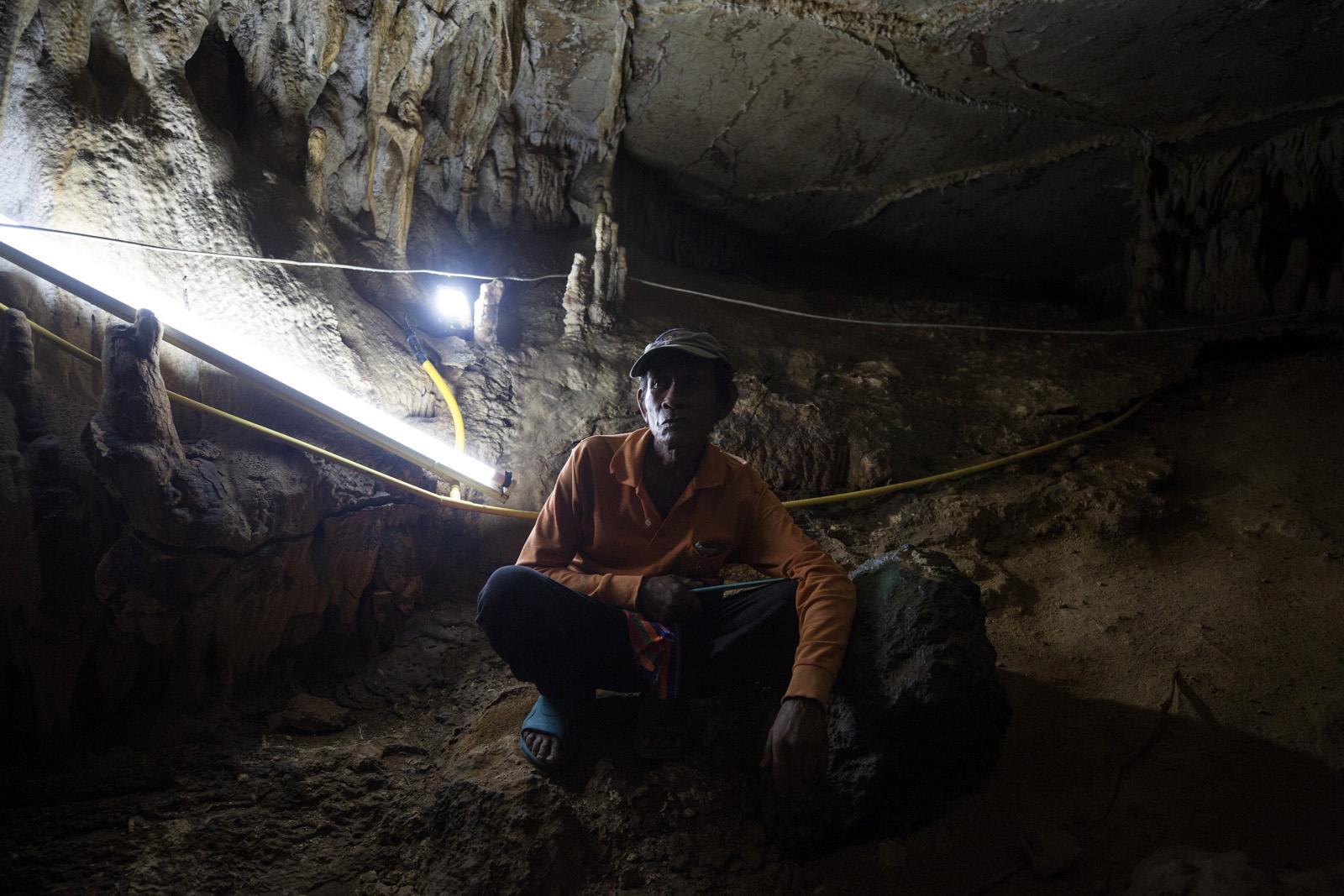
Kiang Pimpan, 57, sits inside a large cave complex containing 10 chambers in...
READ ON
Kiang Pimpan, 57, sits inside a large cave complex containing 10 chambers in an adjacent mountain. The locals fear that when the mining company uses dynamite to explode the rock it could cause the collapse of this cave that they hope will attract tourists in the future
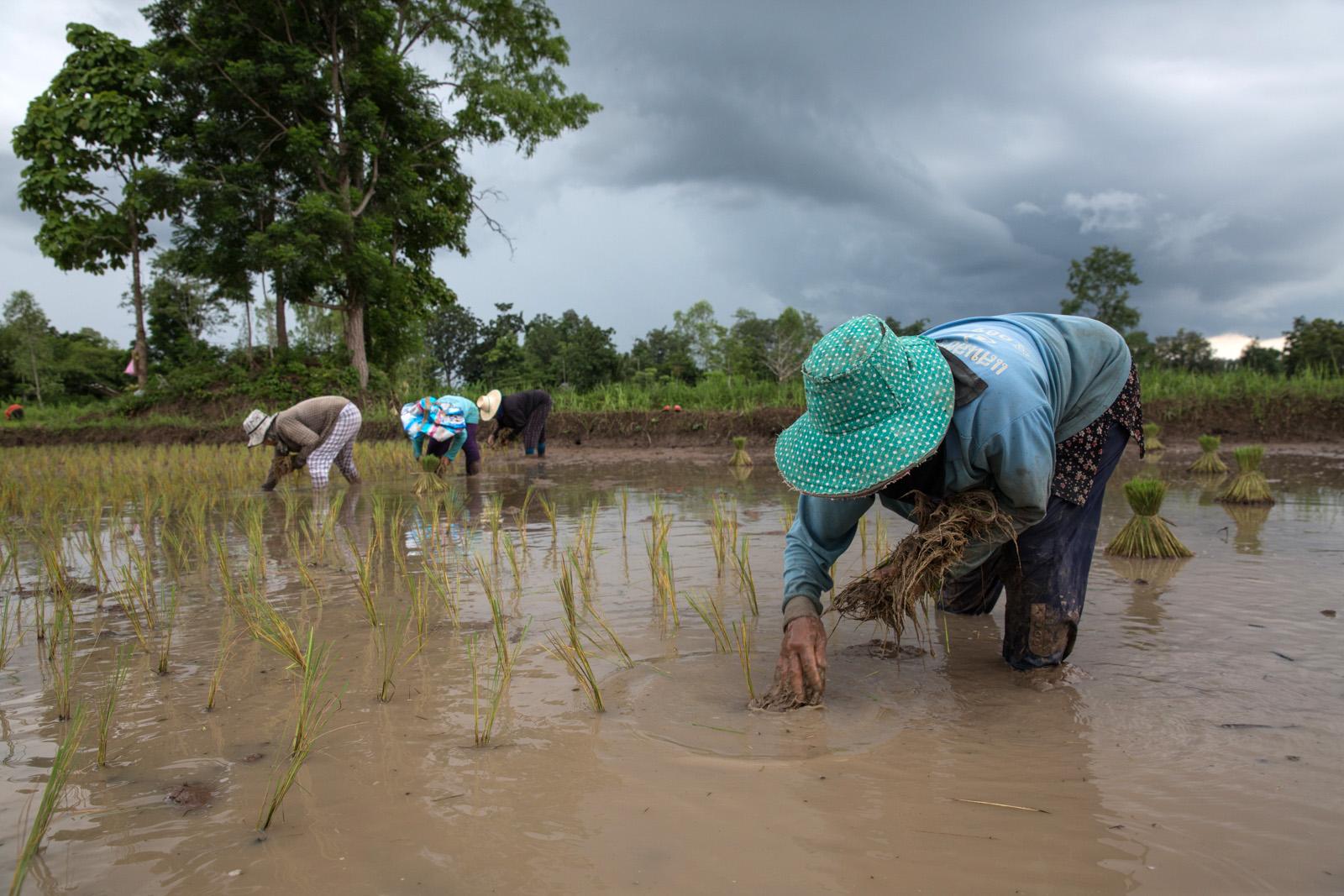
The district of Dong Mafai is a rural area with the local people growing rice...
READ ON
The district of Dong Mafai is a rural area with the local people growing rice and sugar cane as well as collecting other naturally found food resources, like mushrooms and herbal plants, in the forests. The mine took control of almost 30 hectares of forest, reducing the locals' access to collect food.
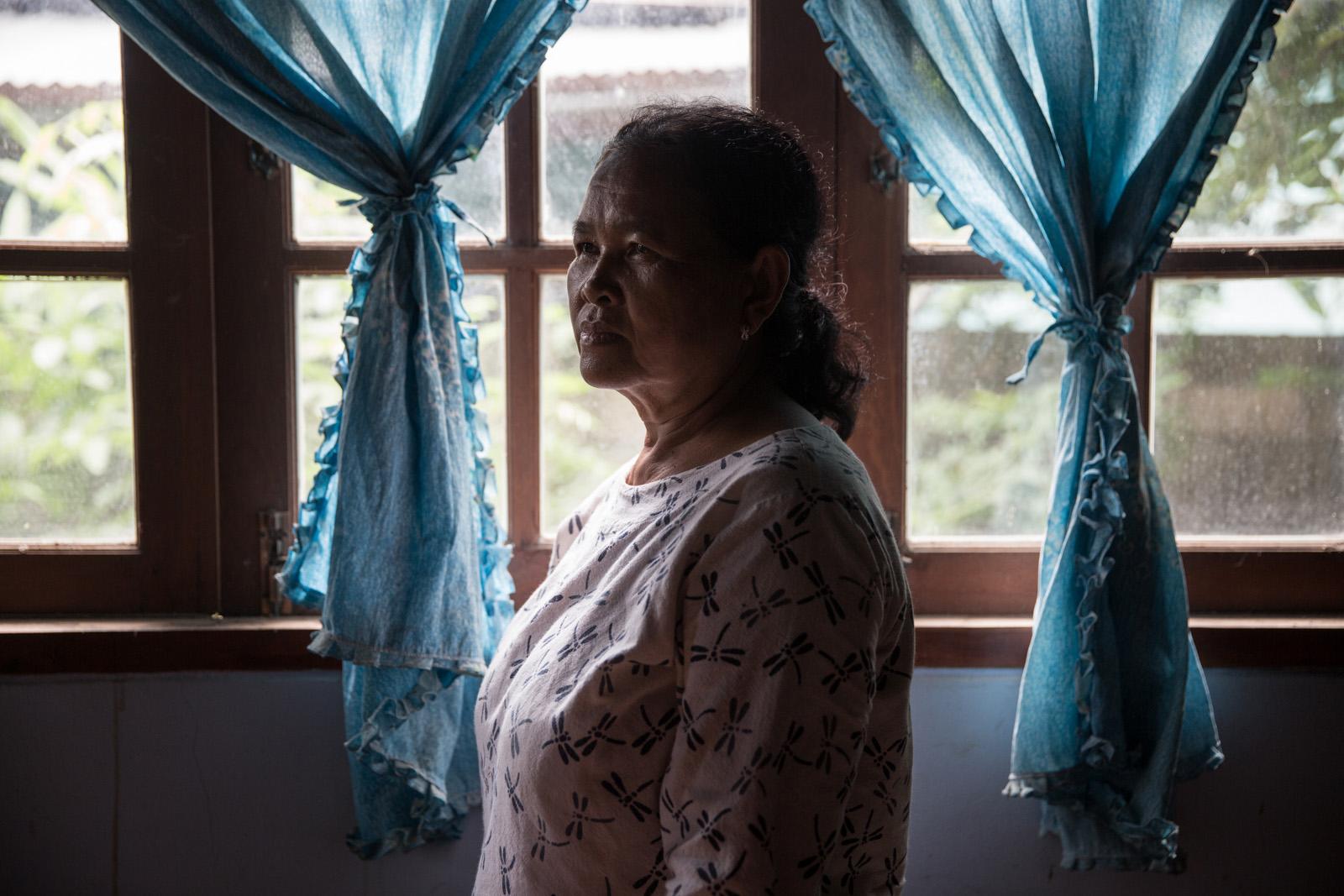
Lamduan Wongkhamchan, a core member of the community group, stands inside her...
READ ON
Lamduan Wongkhamchan, a core member of the community group, stands inside her house in Chok Chai village. “We have been fighting against the quarry for almost 30 years since I was 40 years old. I want this struggle to end in my generation. I don’t want the younger generations, my children and grandchildren to have to continue this struggle.” she says.
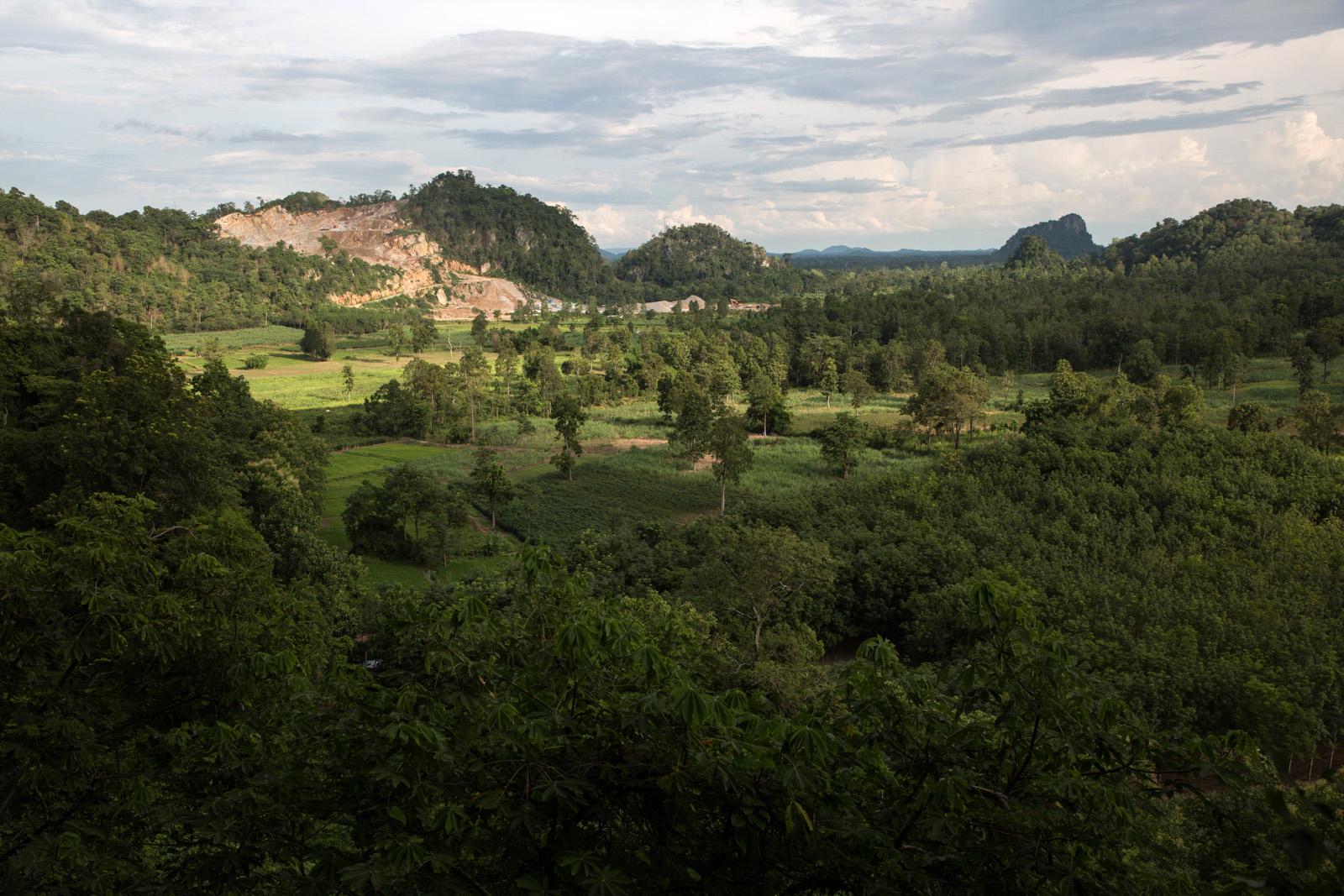
A view of the mine which the local people of this area are fighting against...
READ ON
A view of the mine which the local people of this area are fighting against seen from an opposite outcrop.
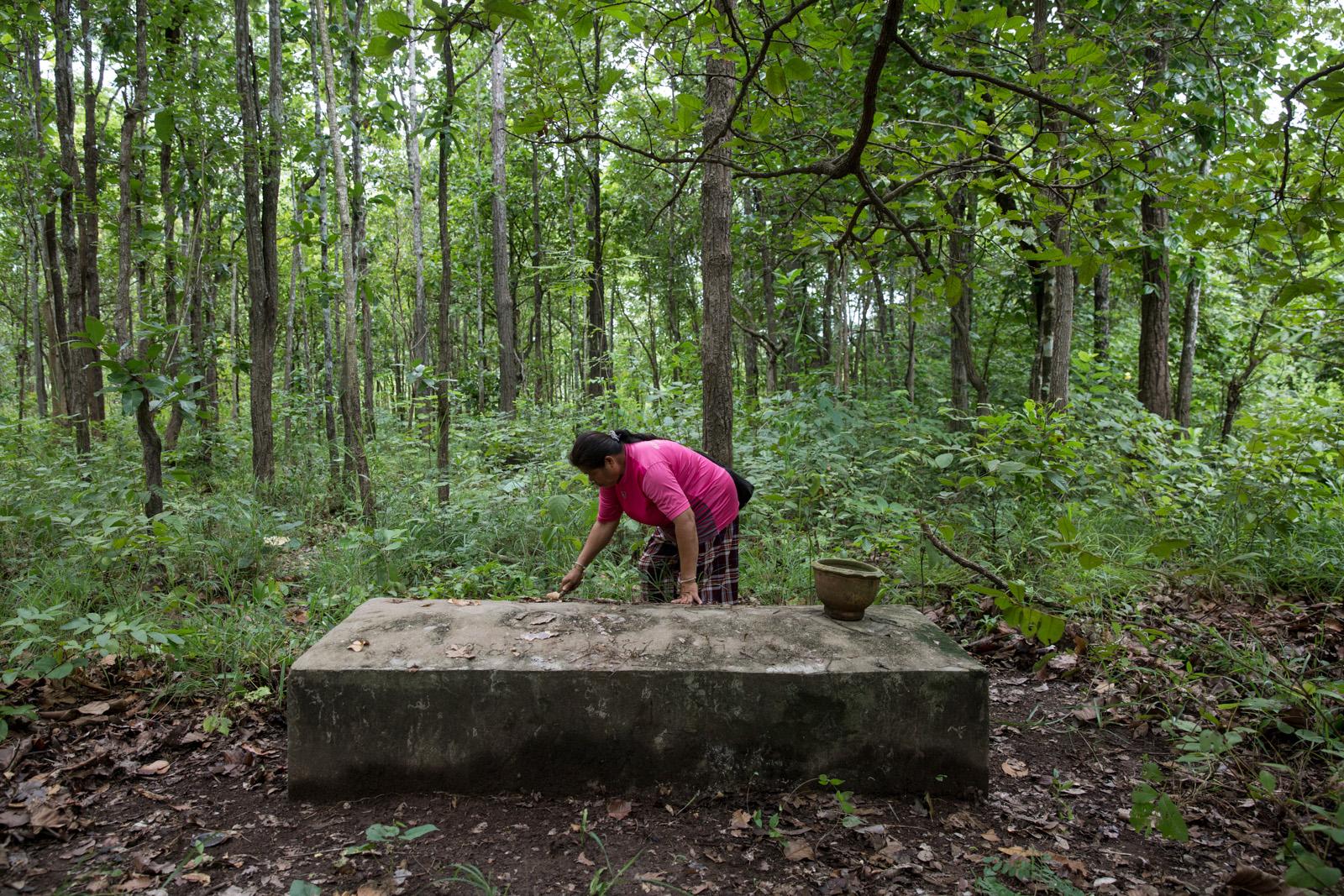
Sorn Khamjem, 59, cleans the area around her husband’s grave, which...
READ ON
Sorn Khamjem, 59, cleans the area around her husband’s grave, which stands alone in a community forest. She has refused to cremate his body, as is Buddhist tradition, until there is justice.
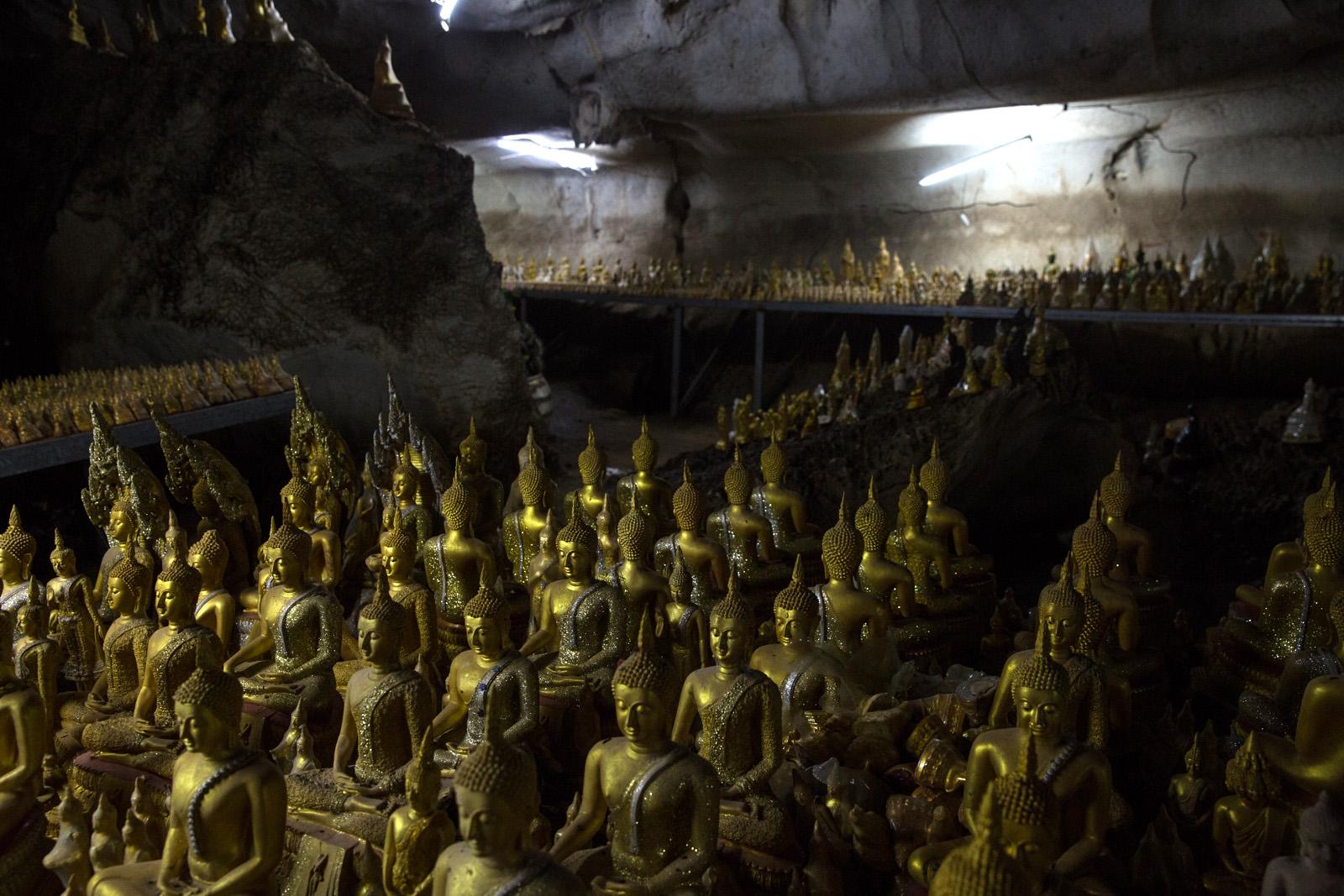
A sacred cave in another adjacent mountain to the mine contains 5000 Buddha...
READ ON
A sacred cave in another adjacent mountain to the mine contains 5000 Buddha statues. The local people argue that with so many religious sites and even 3000 year old verified cave drawings, mining should not be allowed because of the locations historical and cultural importance.
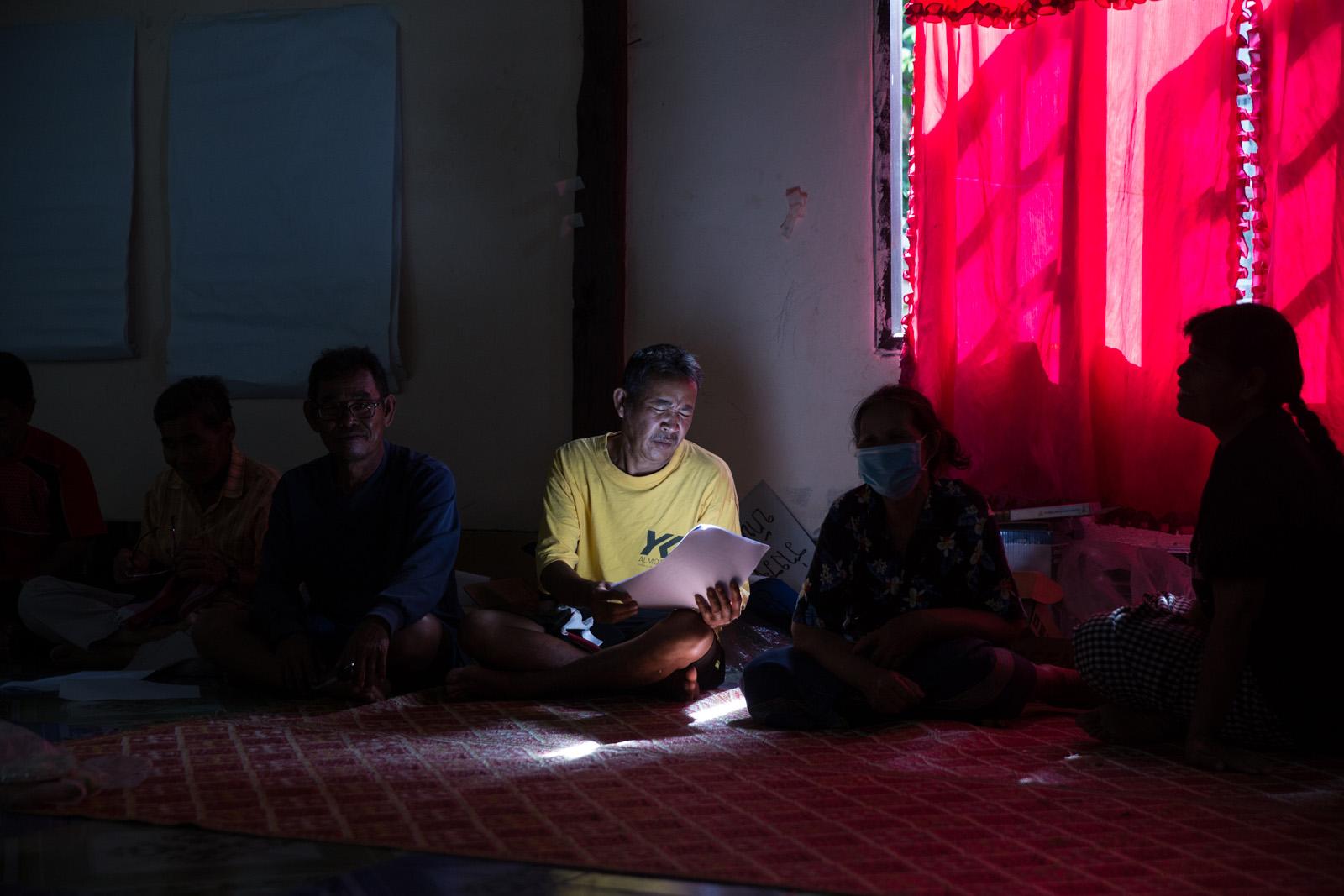
A man reads some documents with the light from a gap in the curtains at an...
READ ON
A man reads some documents with the light from a gap in the curtains at an important meeting a few days before this anti-stone mining community travelled by convoy to the provincial capital to meet the Governor of the Province to demand the mines closure.
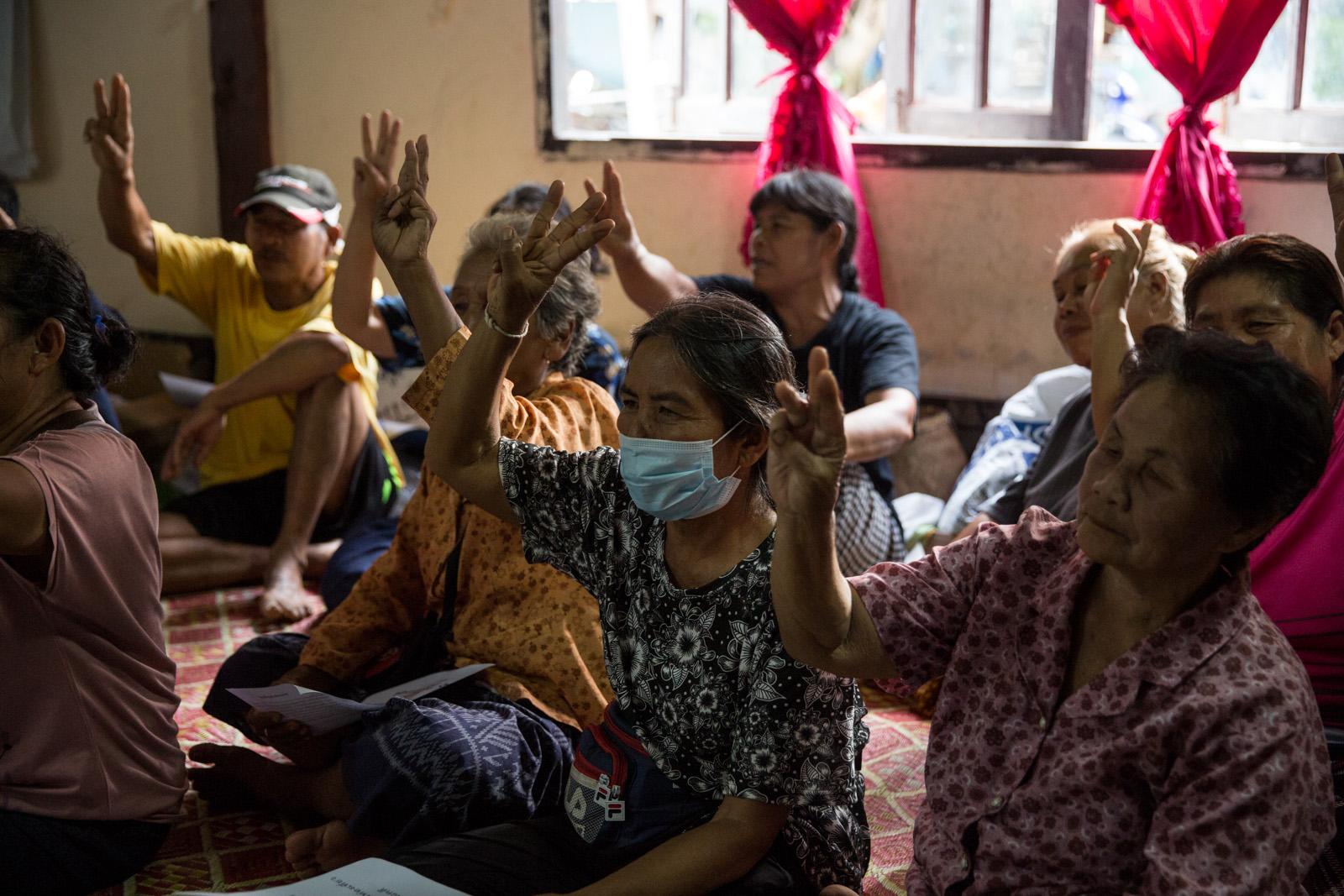
Villagers practise their three finger sign at an important meeting a few days...
READ ON
Villagers practise their three finger sign at an important meeting a few days before the community travel to the provincial capital to meet the Governor of the Province to demand the mine closure. Inspired by the current students practices, the villagers sign represents the 3 main objectives of the community which are to close the mine, rehabilitate the area and develop it in to a tourism hotspot.
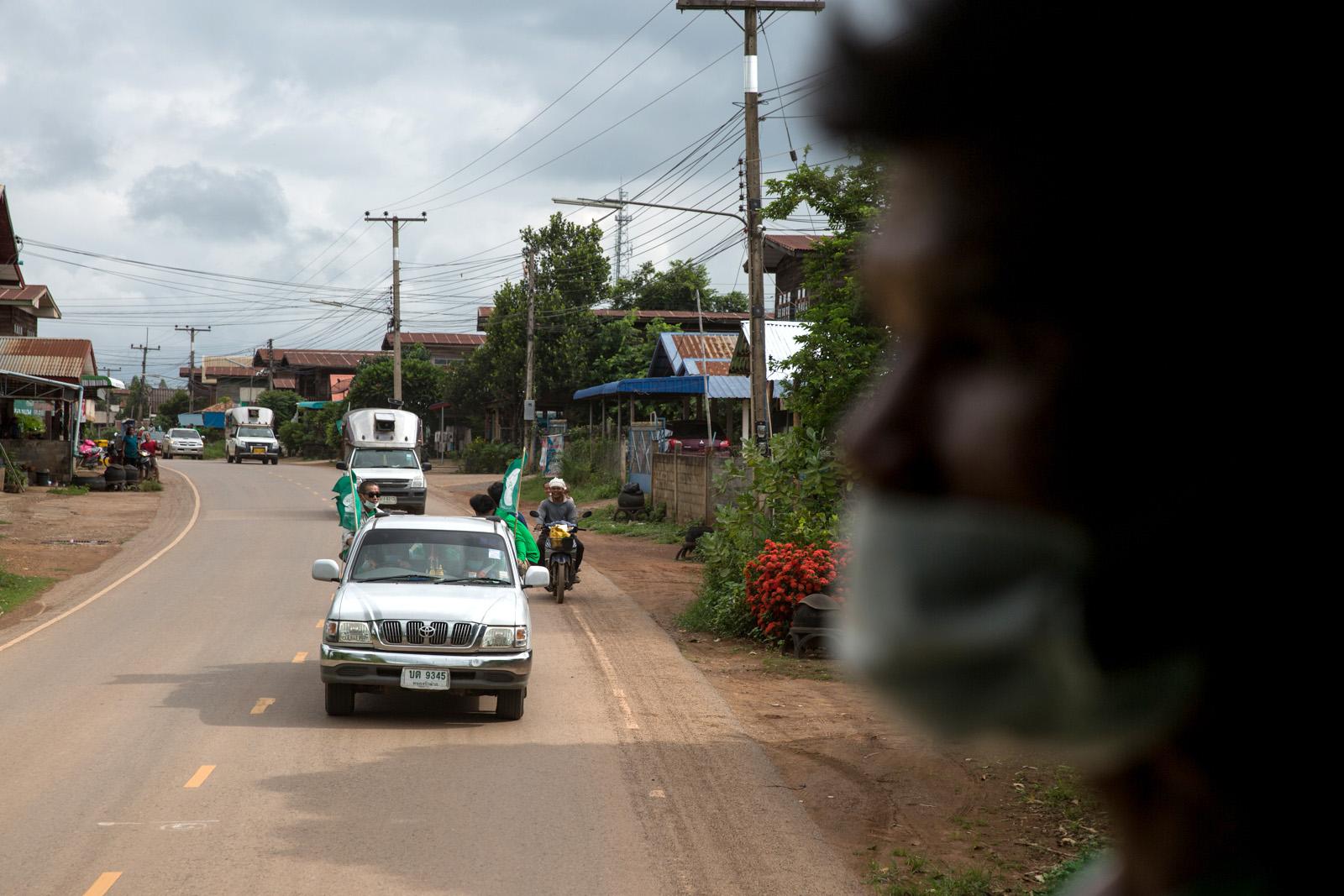
On the morning of August 13th, a 10 vehicle-convoy carrying several hundred...
READ ON
On the morning of August 13th, a 10 vehicle-convoy carrying several hundred people made its way towards a meeting with Government officials at the Provincial Hall in Nong Bua Lamphu province. This was the community's way to give the officials one last chance to help them before they took action and closed the road to the mine.
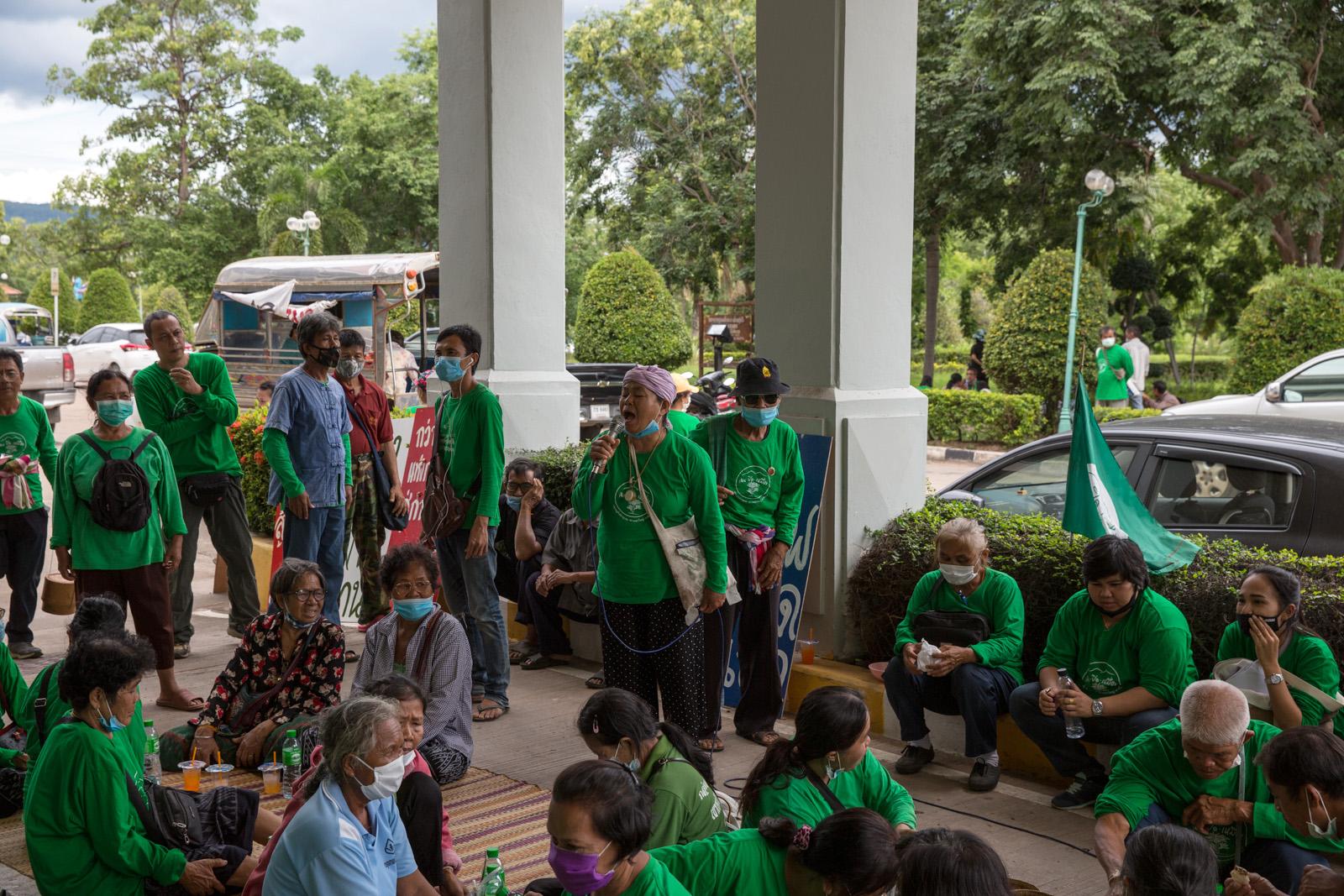
Several hundred villagers take over the steps of the Provincial Hall of Nong...
READ ON
Several hundred villagers take over the steps of the Provincial Hall of Nong Bua Lamphu Province on August 13th. Observed closely by police and members of the intelligence agencies, they shouted slogans and called for the quarry to be closed.
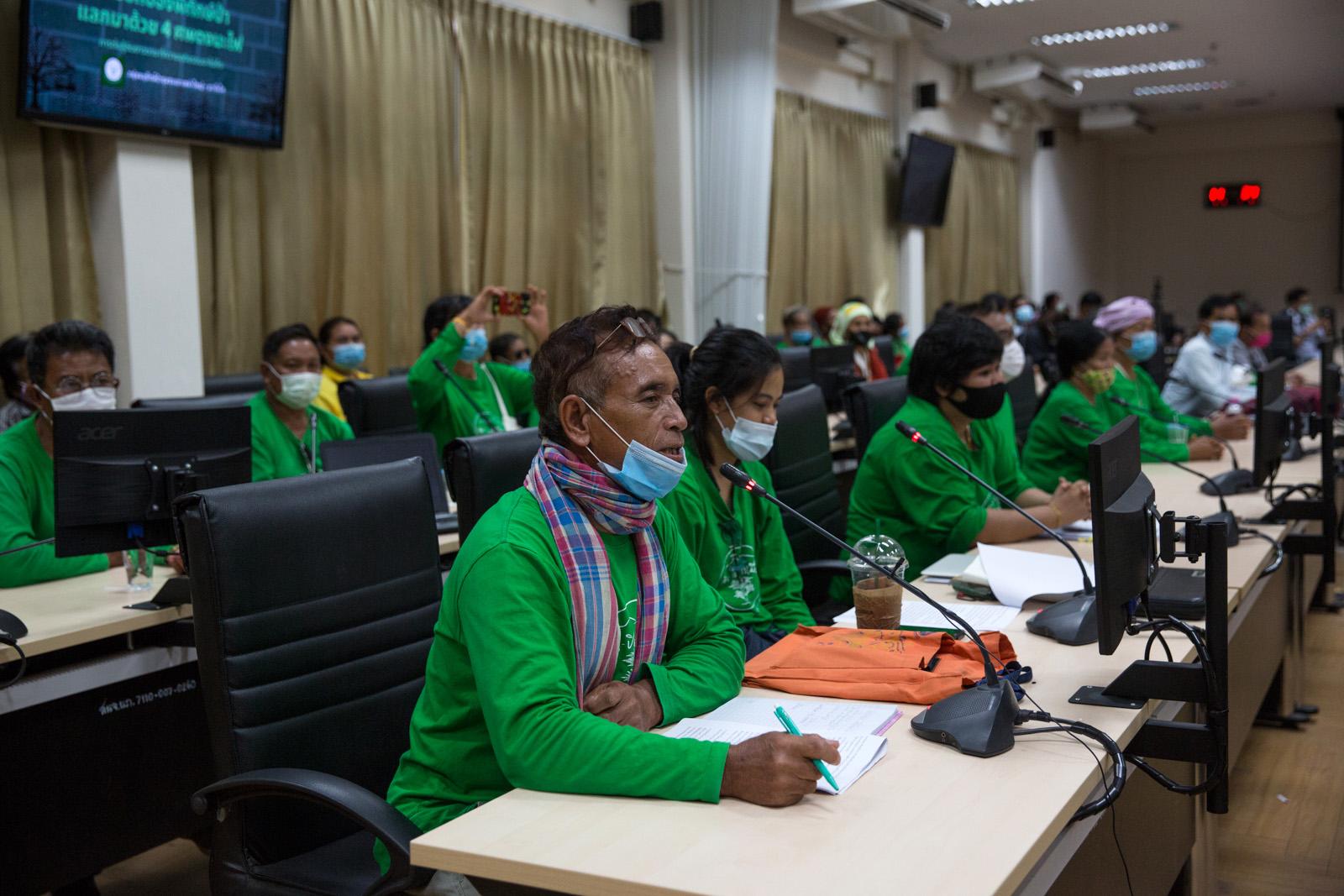
Community group representatives using carefully collected data and citing...
READ ON
Community group representatives using carefully collected data and citing sections of the Mineral Act of 2017, called for an immediate closure of the mine and environmental restoration of the damaged forest area.
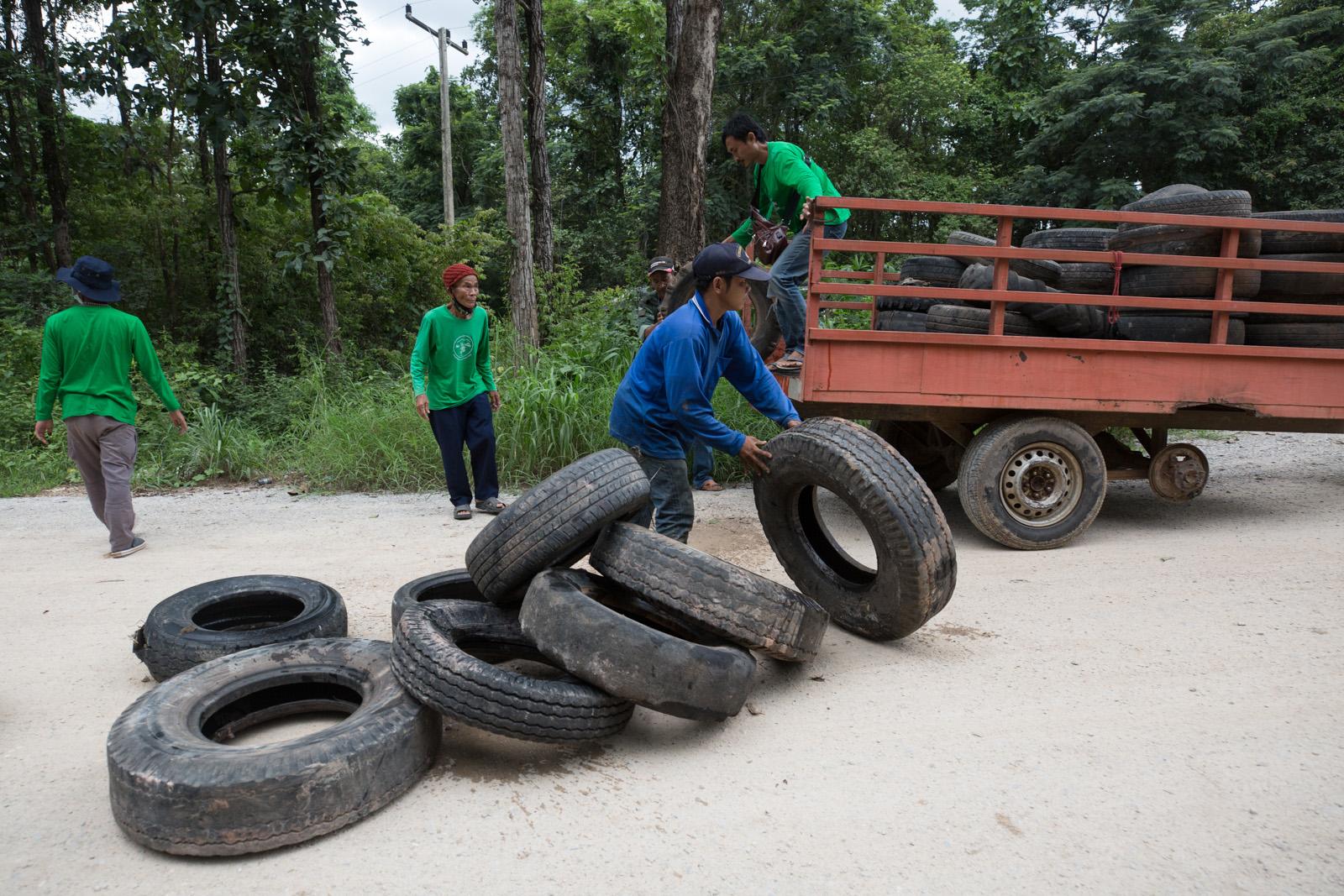
With the officials failing to reassure the community they drove back to start...
READ ON
With the officials failing to reassure the community they drove back to start building the roadblock covering the road with tires and closed down the only access to the mine for large trucks.
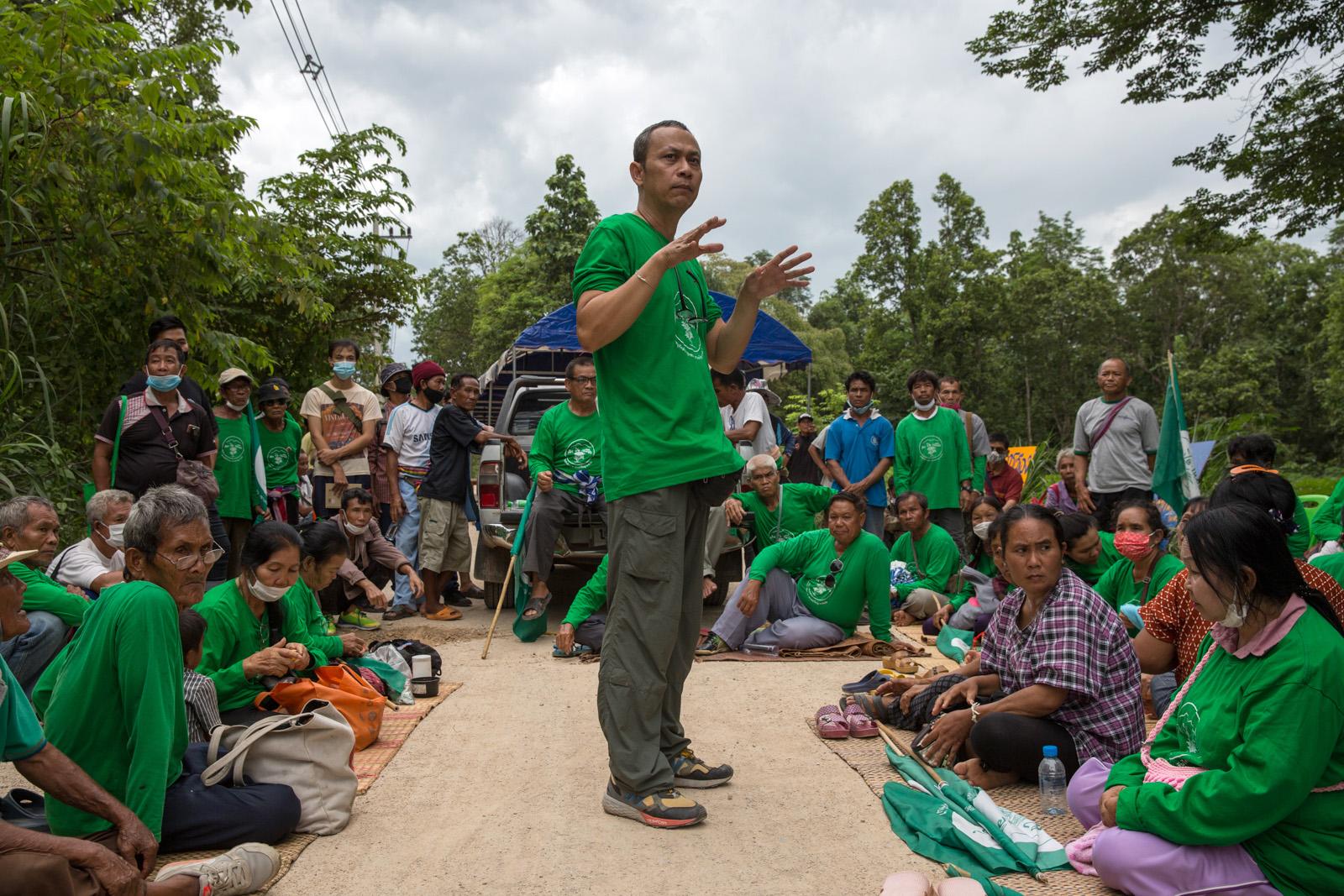
Renowned anti-mining advocate and adviser of the NGO Campaign for Public...
READ ON
Renowned anti-mining advocate and adviser of the NGO Campaign for Public Policy on Mineral Resources Lertsak Khamkhongsak talks to the local anti-stone mining group on the first day of the roadblock. Lertsak and his NGO assisted the community group in successfully setting up the blockade and remained with the villagers for months sleeping and eating with them.
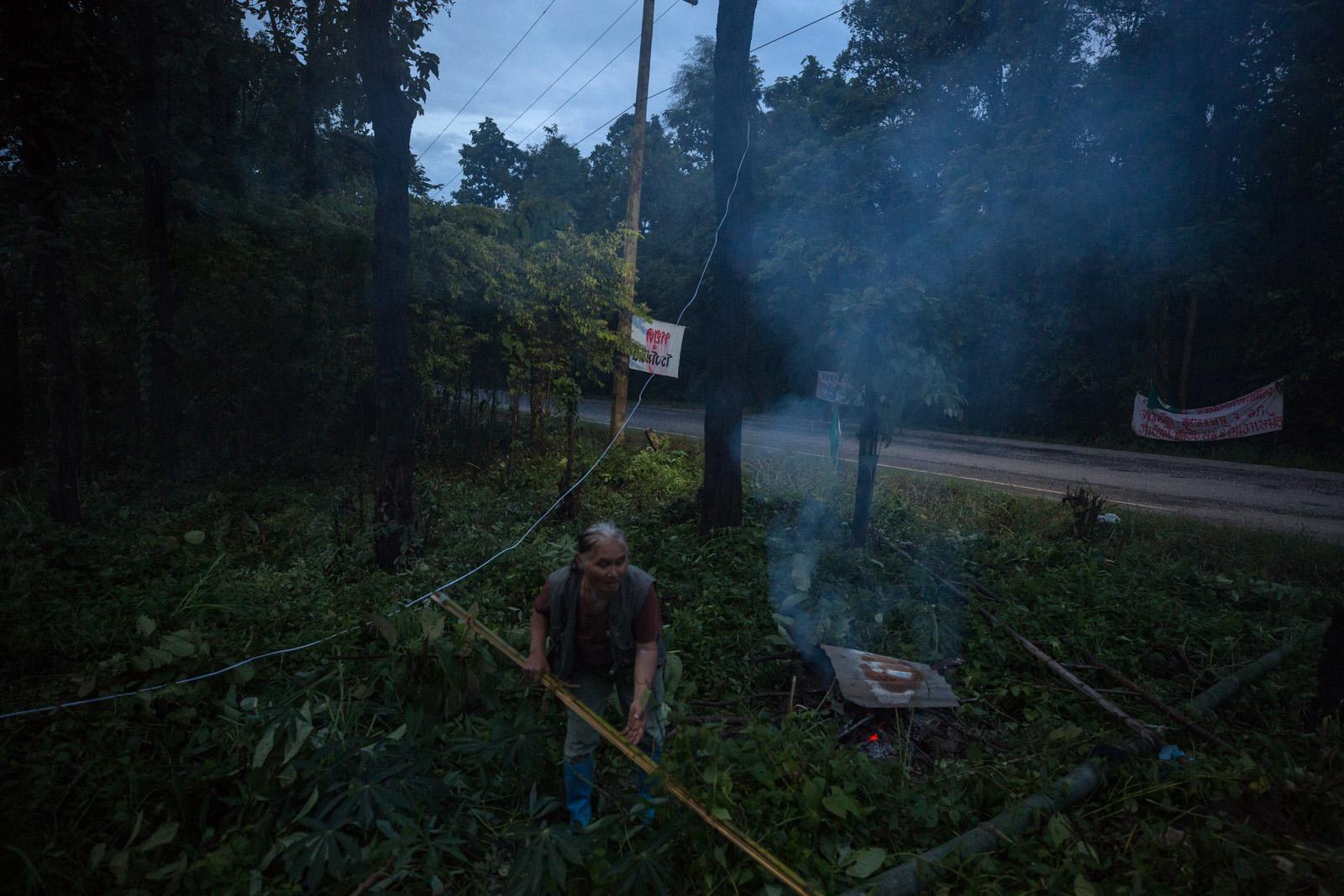
A villager makes a fire to keep mosquitos away at the entrance to the newly...
READ ON
A villager makes a fire to keep mosquitos away at the entrance to the newly erected road blockade.
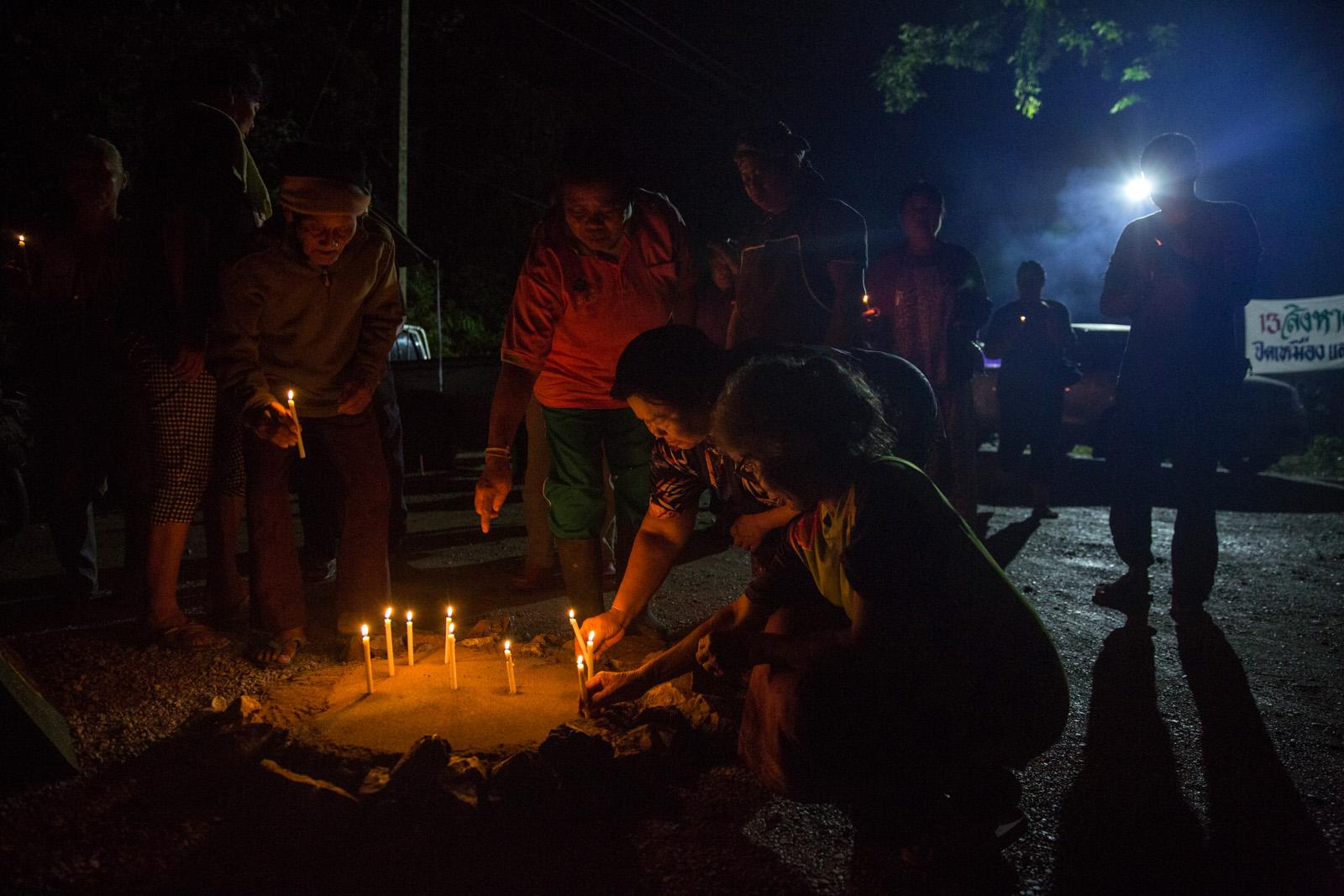
On a night at the blockade the villagers of Dong Mafai organise a small...
READ ON
On a night at the blockade the villagers of Dong Mafai organise a small candle-lit vigil to remember the 4 people who have been killed during their prolonged 26-year struggle. One by one the villagers silently placed candles at the entrance to their blockade.
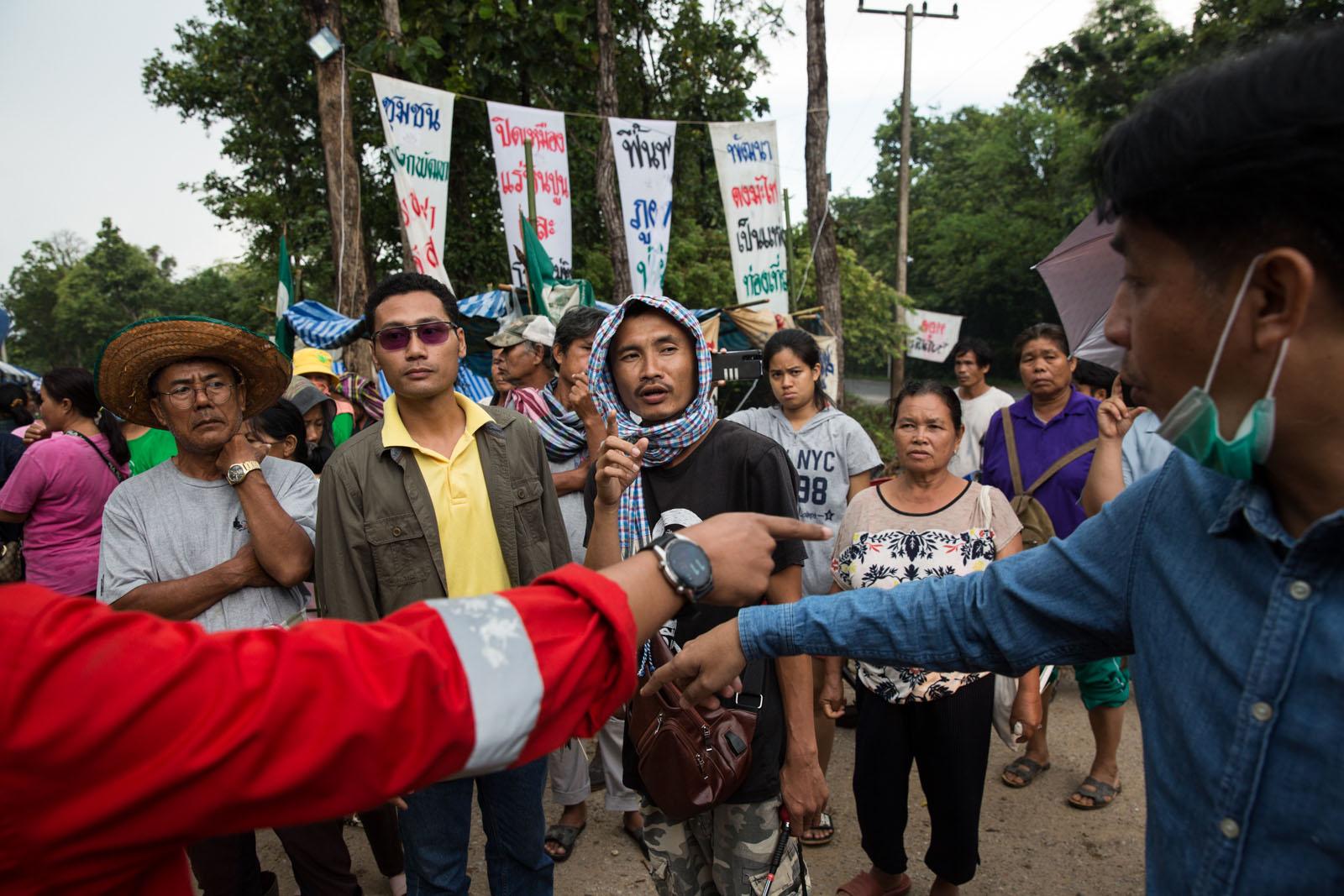
On the 1st September 2020, a sub-contractor who had rented the mining...
READ ON
On the 1st September 2020, a sub-contractor who had rented the mining equipment to the mines owner requested that it would like to remove its machinery from the mine. Before allowing the trucks past the blockade the villagers negotiate with the company.
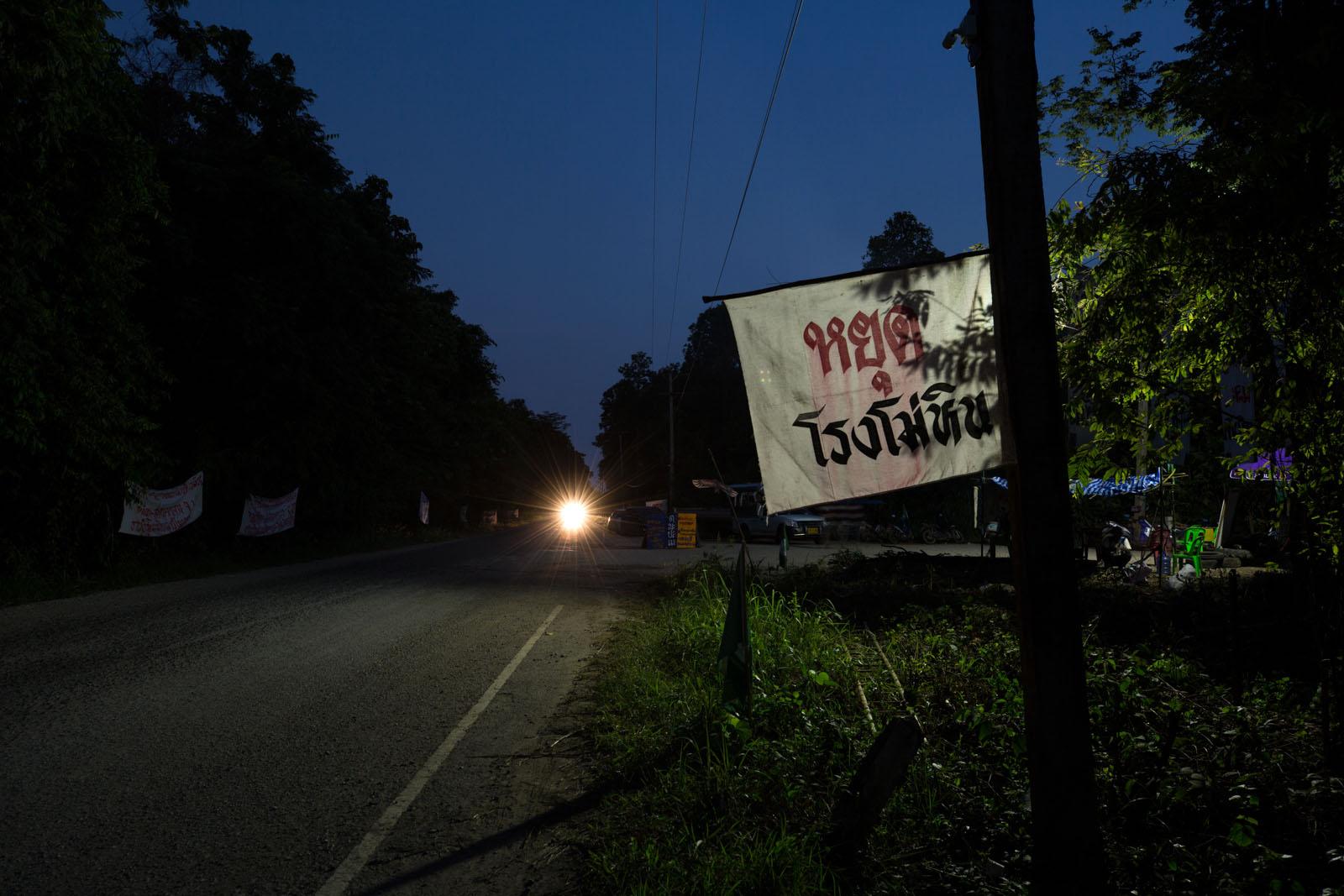
A protest banner saying 'Stop the stone quarry' hangs on the road...
READ ON
A protest banner saying 'Stop the stone quarry' hangs on the road that runs next to the blockade.
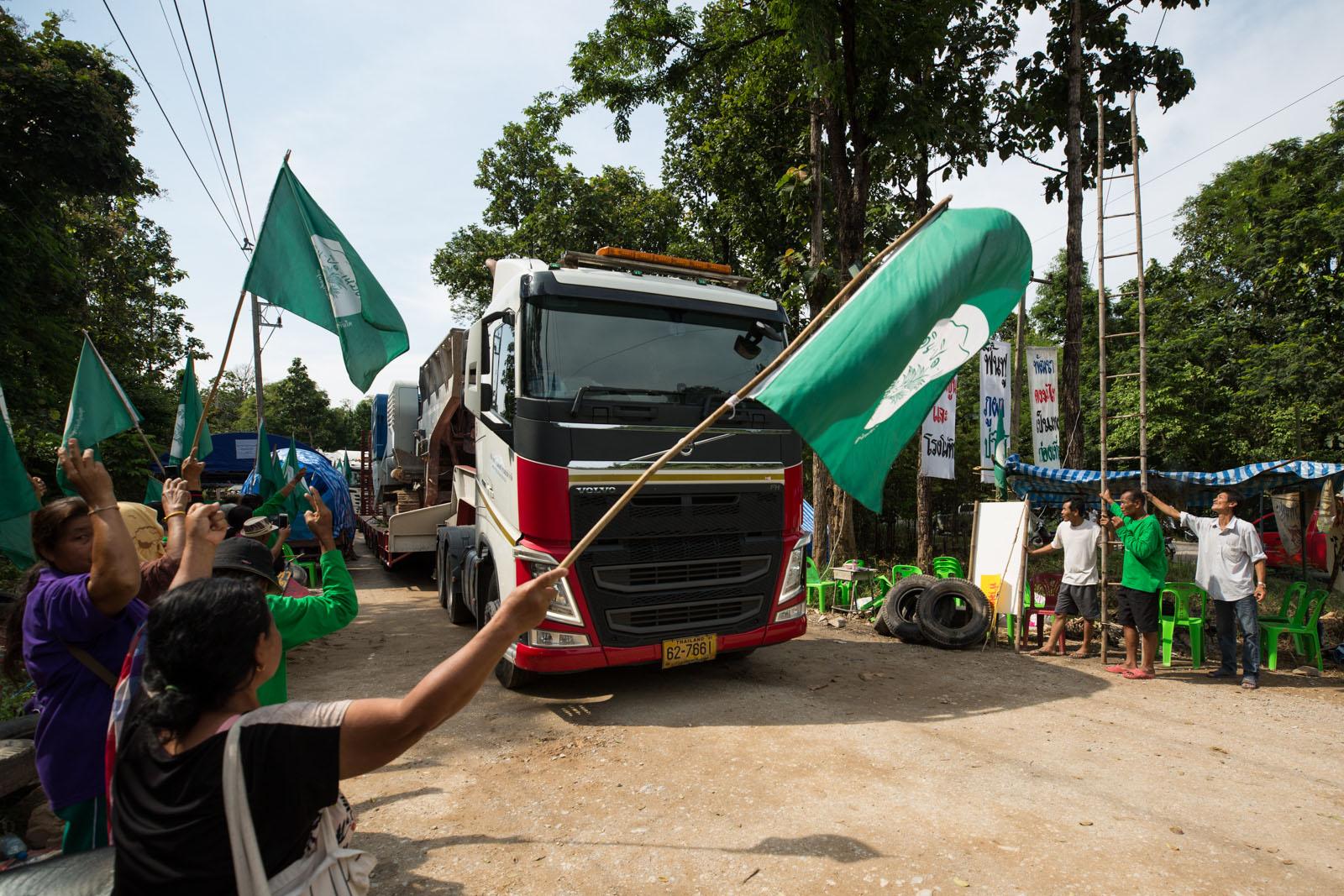
On 1st September villagers celebrate and wave flags as the company who...
READ ON
On 1st September villagers celebrate and wave flags as the company who provided the mining machinery removes its equipment on 3 large trucks, that are allowed to pass through the villagers blockade.
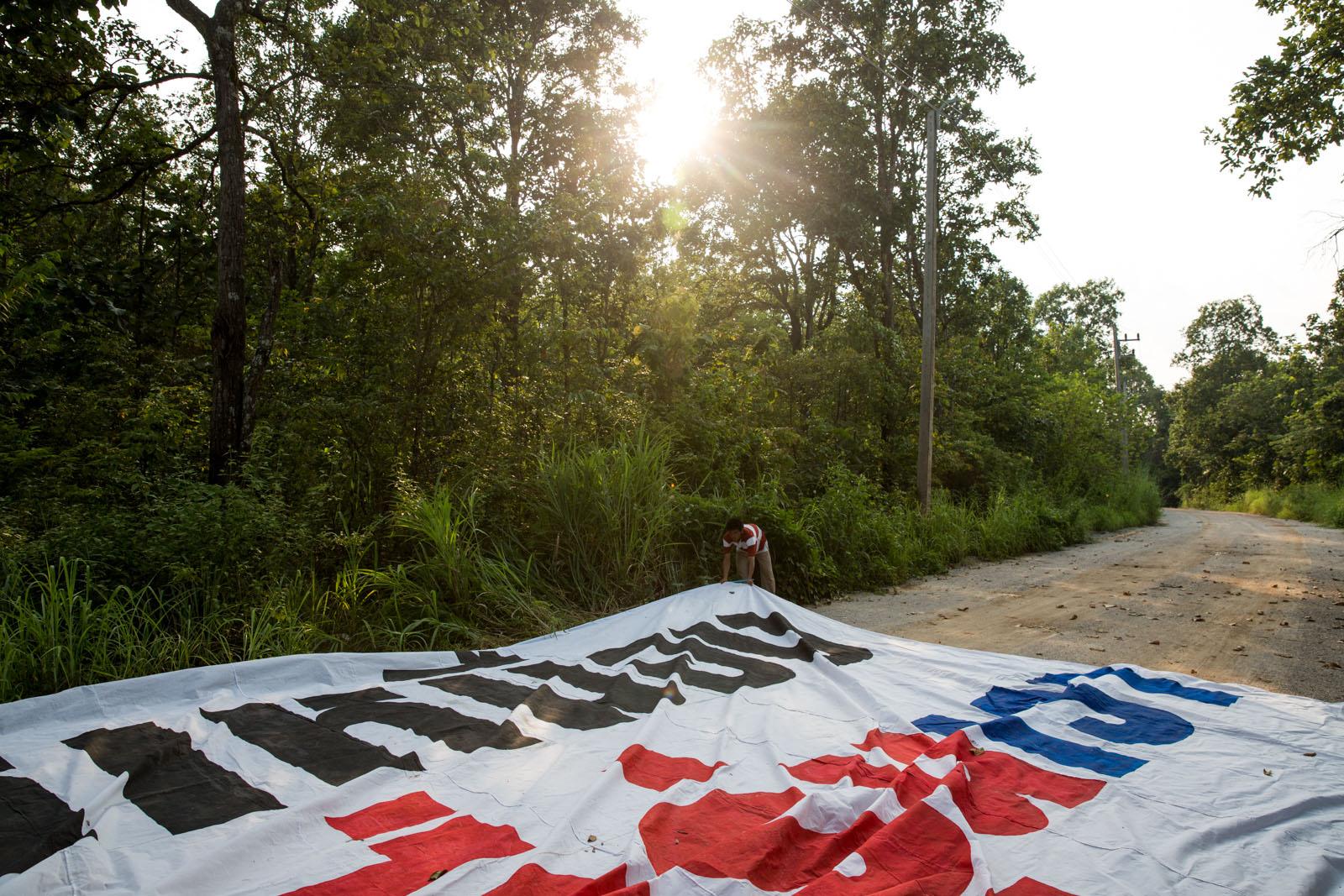
With the expiration of the Forestry Permit, provided to the mining company by...
READ ON
With the expiration of the Forestry Permit, provided to the mining company by the Ministry of Forestry fastly approaching and the decision not to renew it, the local people get ready to march up into the mine and hang this enormous banner in defiance.
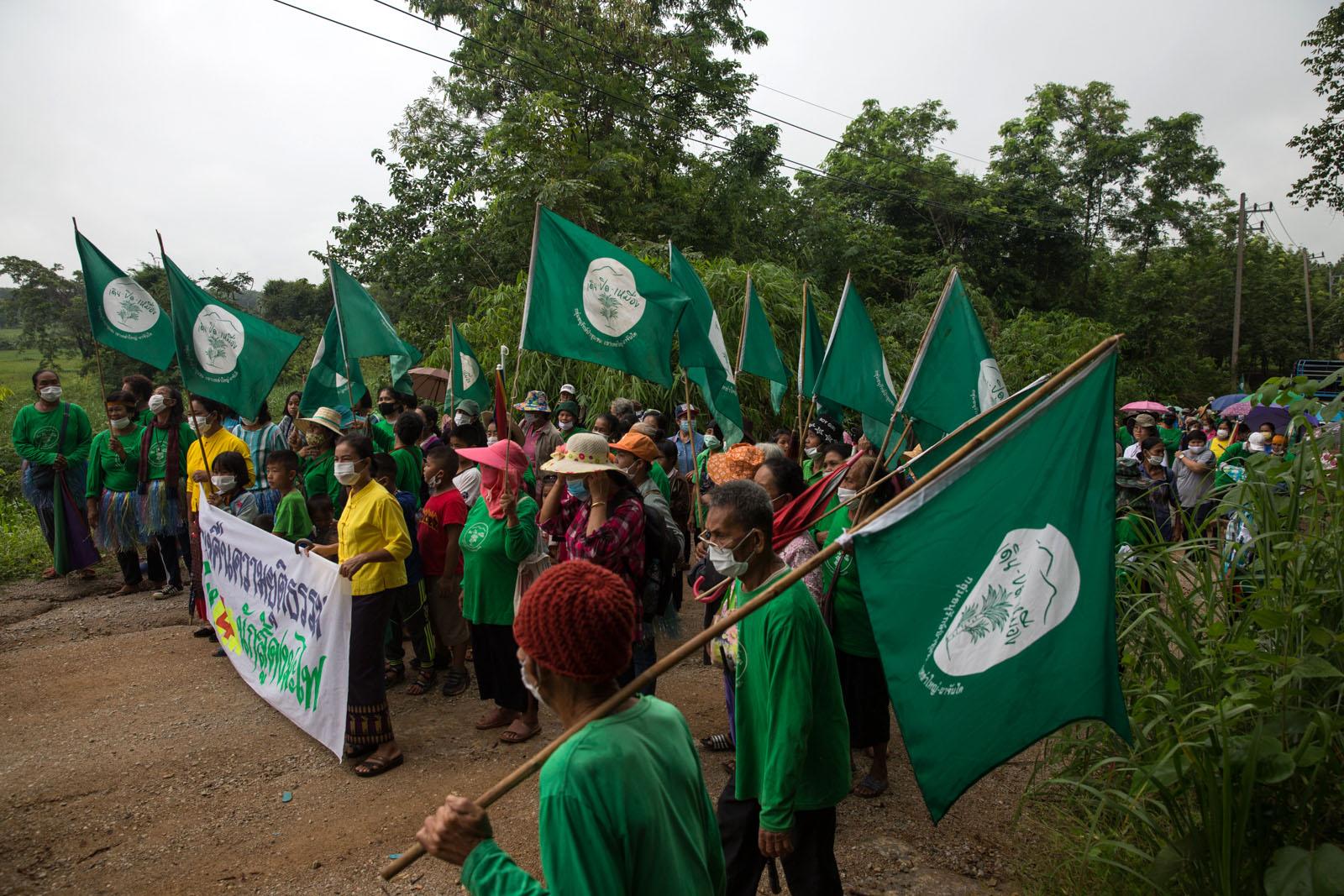
On the day one of the stone mining permits expired, hundreds of locals...
READ ON
On the day one of the stone mining permits expired, hundreds of locals including women and children walked in defiance up in to the mining quarry itself. Waving flags and wearing their conservation groups green shirt, they marched several kilometres to the quarry in an act that was to signify taking back control.
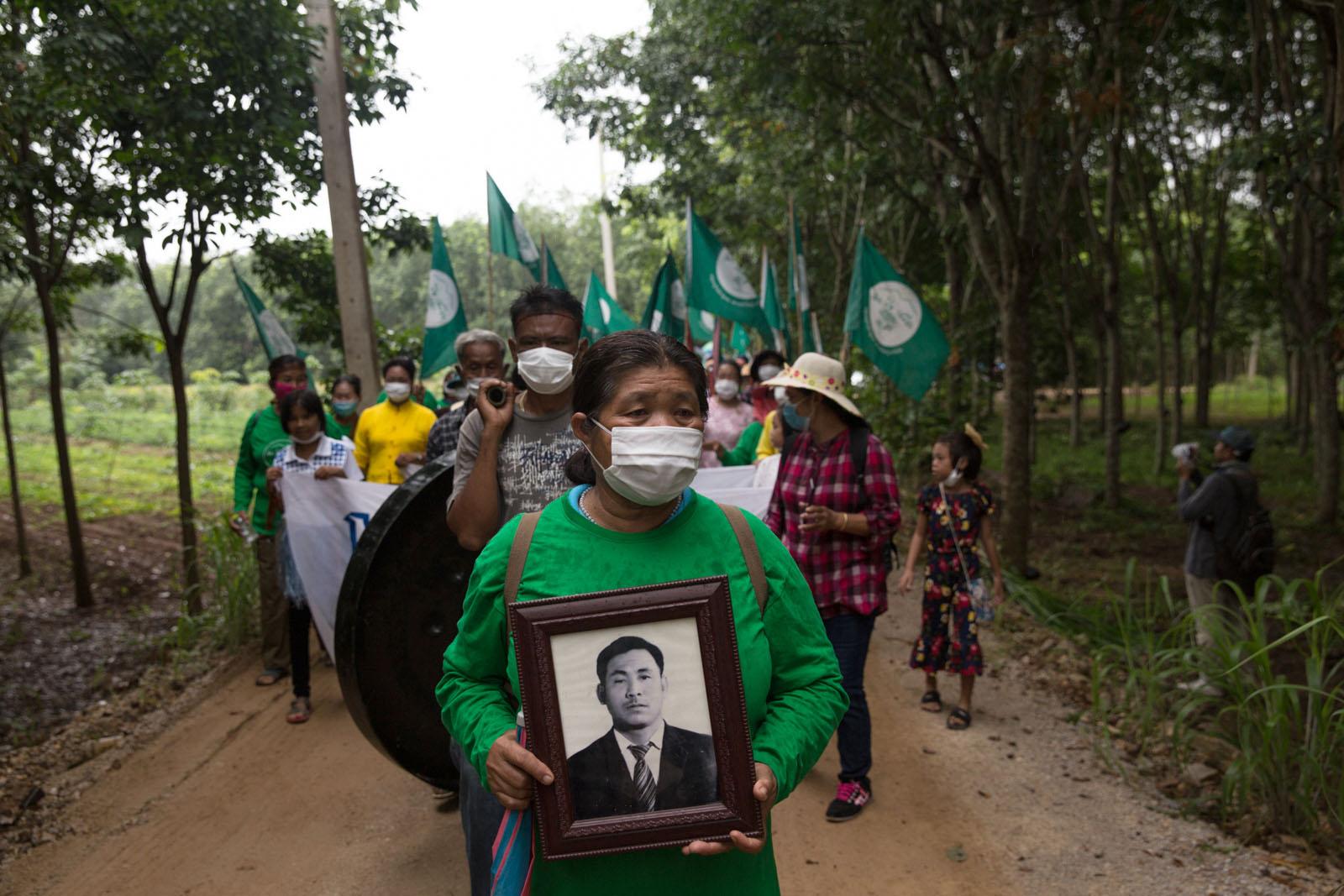
At the head of the group of hundreds of villagers is Sorn Khamjem, 58,...
READ ON
At the head of the group of hundreds of villagers is Sorn Khamjem, 58, holding a picture of her husband Tongmuan Khamjem making their way to take back control of the mine. A staunch anti-mine opponent Mr Tongmuan was shot dead in 1999 whilst riding a motorbike with his friend.
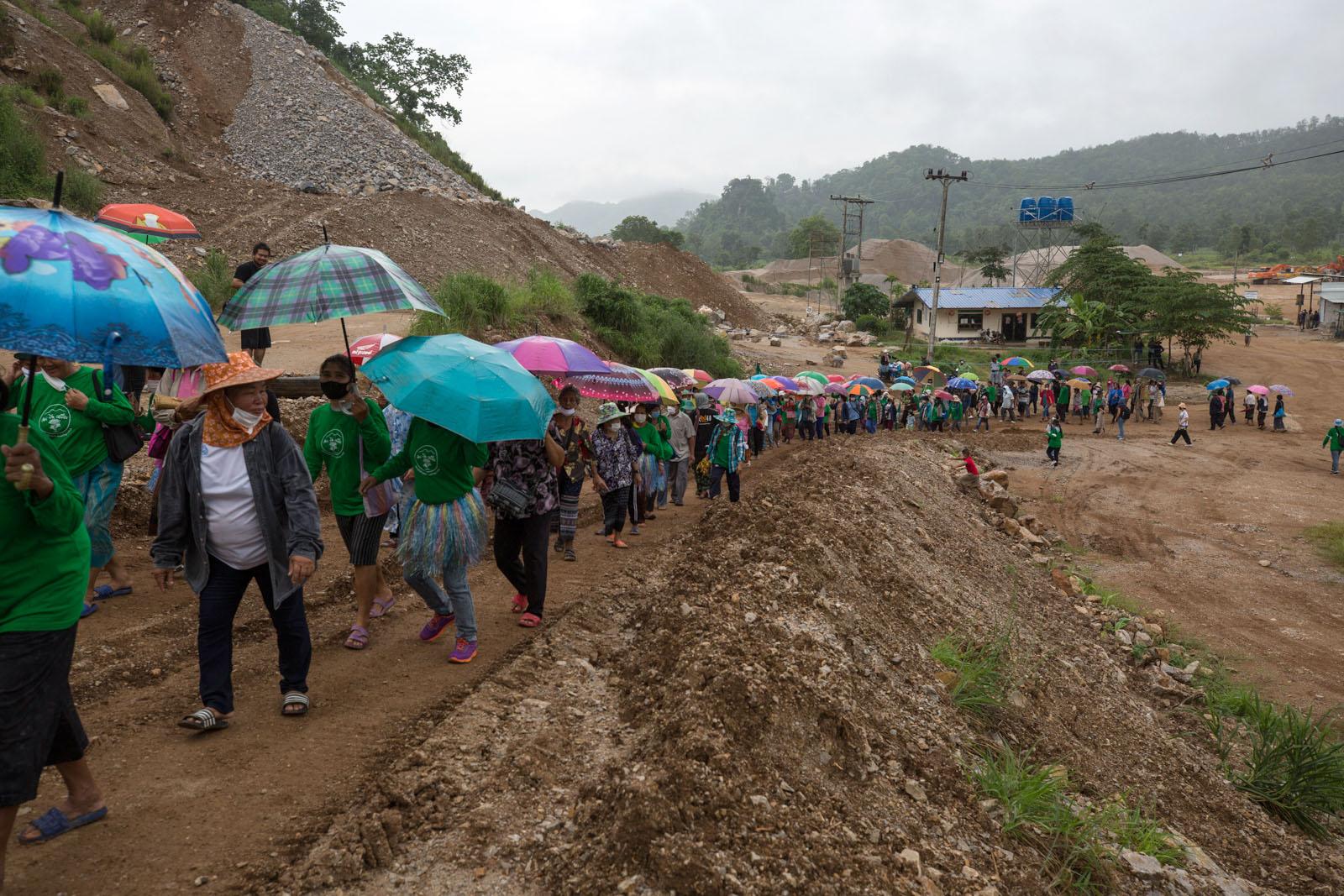
Hundreds of villagers, including many women and children march up in the...
READ ON
Hundreds of villagers, including many women and children march up in the quarry that has caused them so much grief over the last few decades. They stayed for most of the morning, performed Thai Buddhist blessing ceremonies before returning to their protest roadblock a few kilometres away.
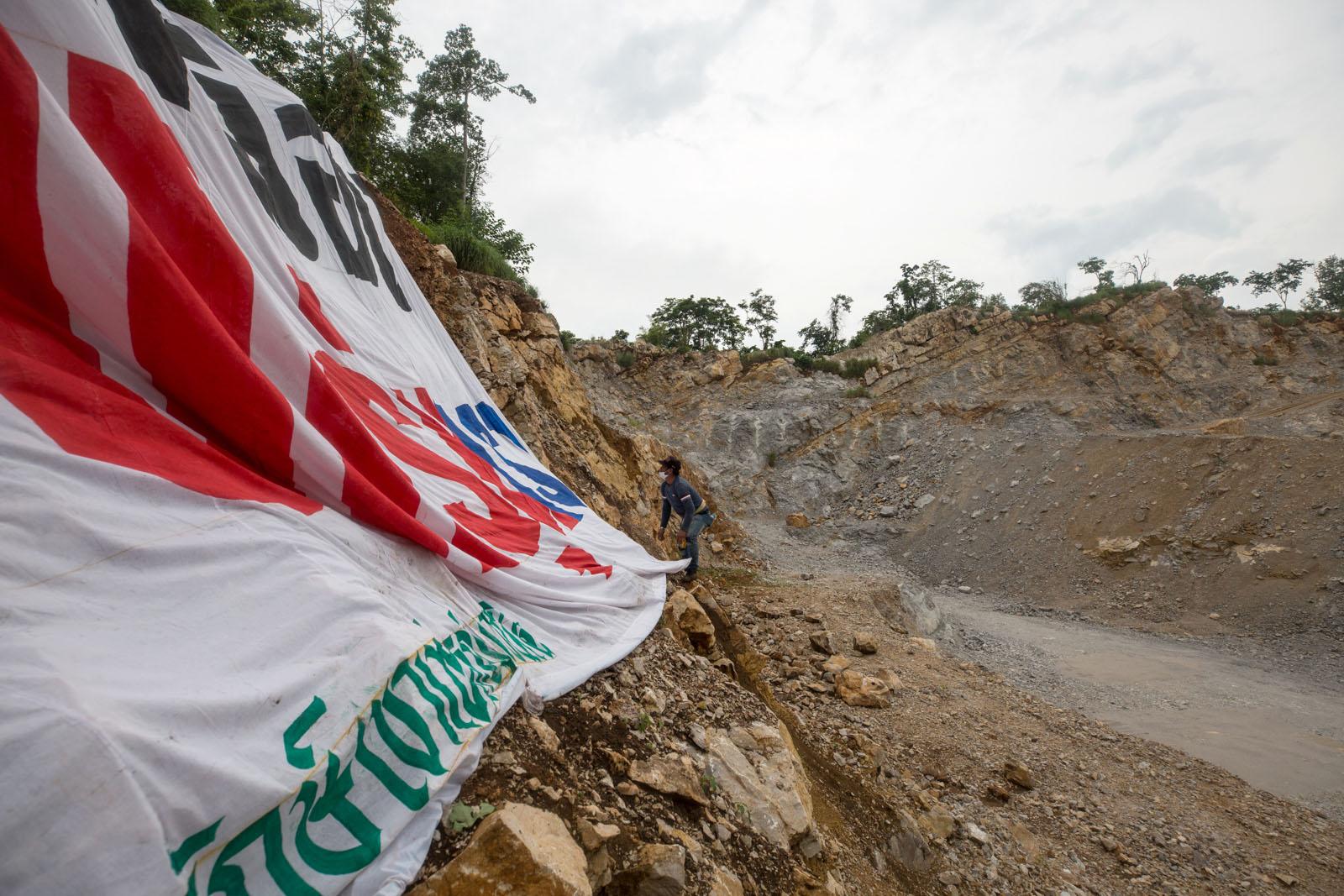
On entering the quarry, some for the first time, villagers proceed to hang an...
READ ON
On entering the quarry, some for the first time, villagers proceed to hang an 18m long banner saying ' Stop the mine in our generation' down the sides of the quarry.
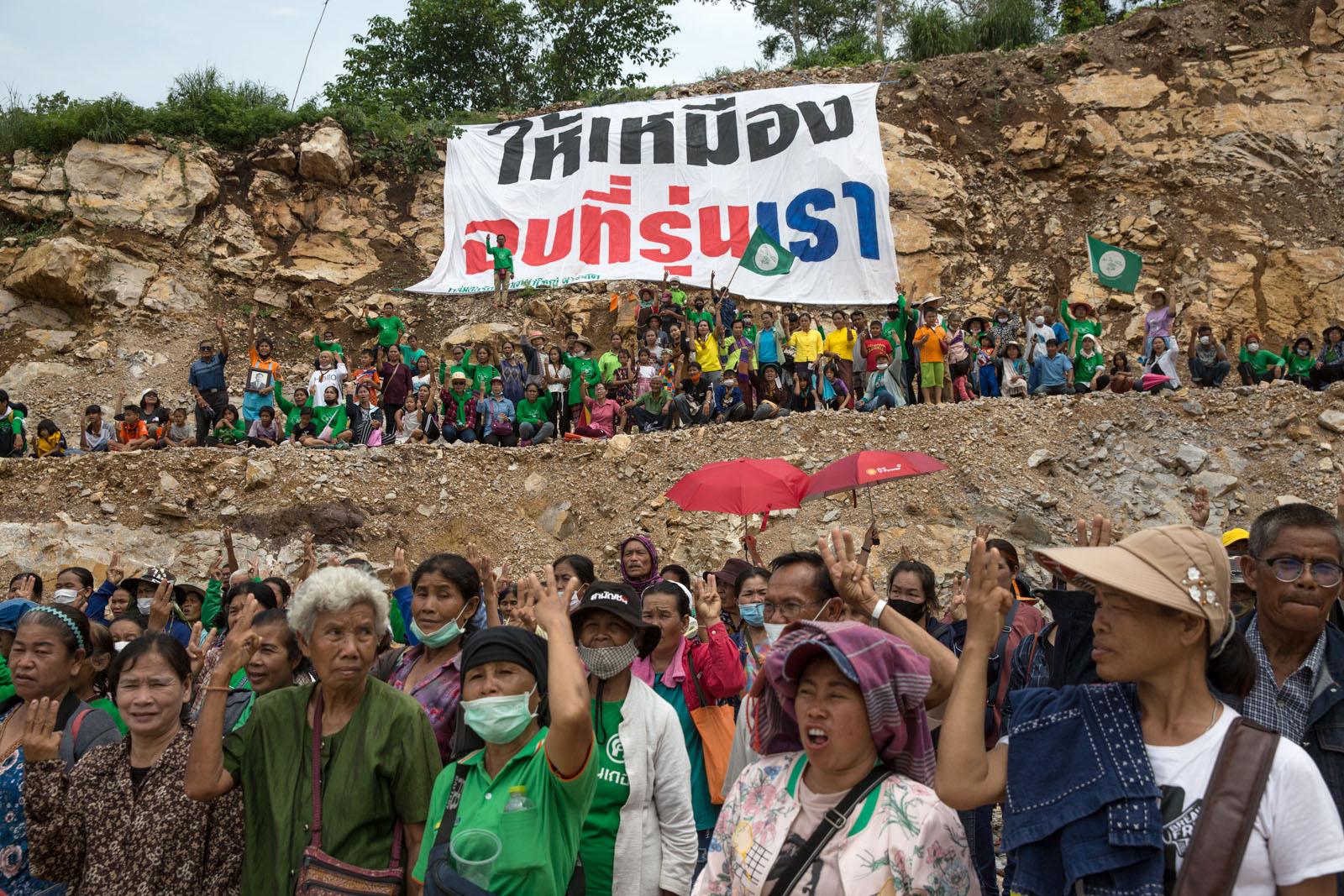
Hundreds of villagers stand in front of an enormous banner saying 'Stop...
READ ON
Hundreds of villagers stand in front of an enormous banner saying 'Stop the mine in our generation' and cheer their success in defeating the mining company and finally putting an end to the quarry.
Almost three decades ago a struggle began between the villagers who live in several communities surrounding a collection of rocky limestone outcrops and a private stone mining company. The villagers, fearing the environmental impacts as well deforestation and the degradation of religious and historical sites have been trying to stop it ever since.
The early years of this struggle were exceedingly deadly for the community with 4 members of the environmental group being killed, two in 1993 and two in 1999. The latter killings included the acting Sub-District Chief Tongmuan Khamjem and his death was particularly shocking to the community as the two men were ambushed and shot dead whilst riding a motorbike on a quiet country road.
With several of the companies mining permits due to expire in September 2020, the villagers began what they described as the last big push to stop the mining by blockading the only access road for big vehicles to the quarry itself. On September 3rd, with the forestry permission permit for the quarry itself expired taking the land away from the company, hundreds of villagers marched on the mine to retake control. The roadblock still remains in place today.
As one core leader called Lamduan Wongkhamchan said “We have been fighting against the quarry for almost 30 years since I was 40 years old. I want this struggle to end in my generation. I don’t want the younger generations, my children and grandchildren to have to continue this struggle.”
























